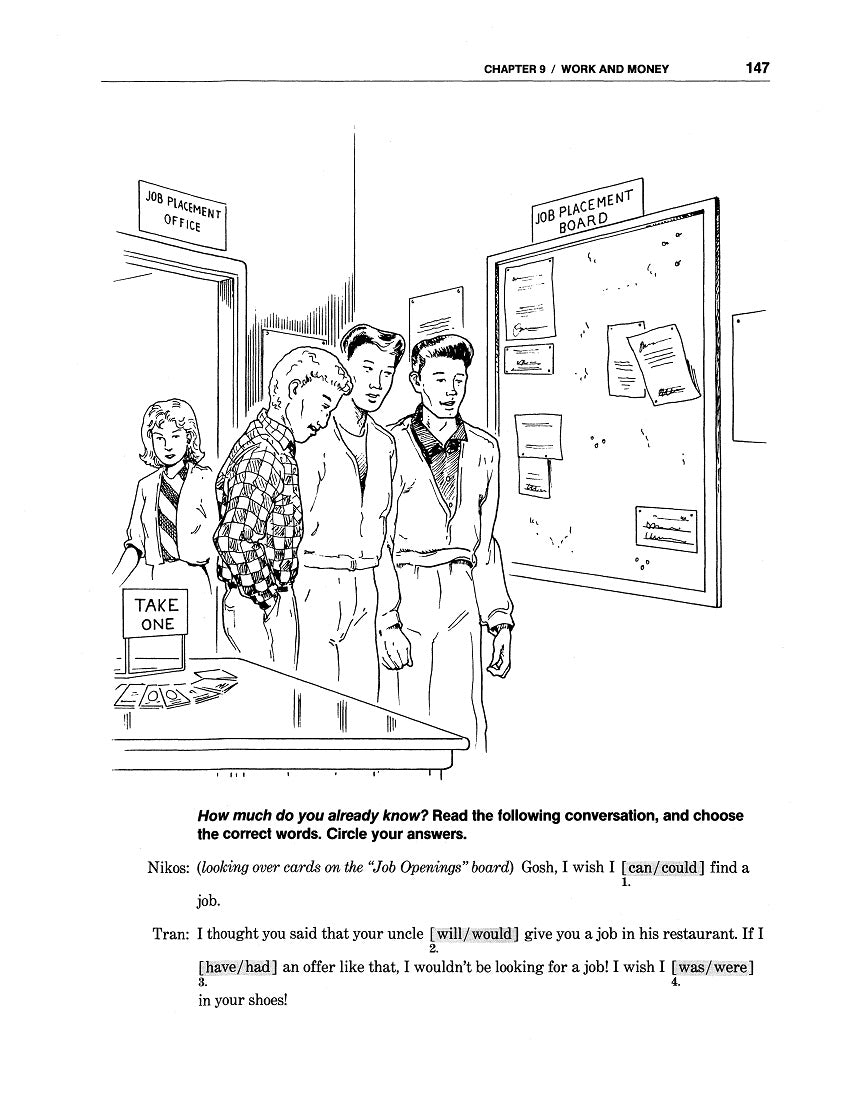1
/
of
6
Work/Life English
D-15.02 Understand & Produce Present & Past Conditionals
D-15.02 Understand & Produce Present & Past Conditionals
Regular price
$5.00 USD
Regular price
Sale price
$5.00 USD
Unit price
/
per
Parts One, Two, Three, Four of Chapter 9: Conditionals & Indirect Speech (“Work & Money”) of WorkLife English Grammar 4: Cross-Cultural Communication, pages 147-162
17 pages
Who It’s For: (Self-)Teachers & Helpers (Intermediate-Plus) Proficient Enough to Get & Create Utterances with Present vs. Past, Real vs. Unreal Conditionals & Indirect Speech
Why It’s Useful: Once students of English grasp the concept of Dependent Clauses to attach to Simple Sentences, they’re likely to notice and want to produce “Conditionals” —sentences with if or unless expressing known factors or hypotheticals and their consequences. Also, they’ll pick up the notion of “Indirect Speech,” in which a Main Clause “reports” what was said in an “embedded” sentence part. As this Unit points out, these kinds of Complex Sentences may require attention to “Sequence of Tenses.”
What You’ll Do:
[1] Look over the page 146 Chapter 9: Work & Money Opener. Do you already “know”—or wish to find out—what the Present vs. Past Conditional: Factual & Imaginative (with wish), Indirect Statements, and Embedded & Indirect Questions might entail? Does the Subject Matter (Types of Work, Job-Interview Strategies, Business Loans, Workplace Safety) interest you? No matter how you answer these questions, this Download will probably teach you something new.
[2] Begin by completing the “How much do you already know?” Pretest on pages 147-148. Your (correct or wrong) choices of phrasing elements with relevant grammar will serve as a Warm-Up to focus attention on instruction. Then you can get what you need from subsequent Explanations & Exercises.
[3] In Part One on pages 149-152, use if-sentences to relate Cause to Result or Condition to Probability in Present-Time two-clause assertions stating Real or Unreal Conditions. Also complete statements with wish. In Part Two (pages 153-155), apply equivalent concepts in The Past Conditional: Factual & Imaginative; Wish.
[4] Part Three on pages 156-158 covers “Direct vs. Indirect Statements.” After speech verbs like say/said, see which tense or modal-verb forms correspond to each other. Then use Indirect Speech forms to relay the content of Direct Quotations to listeners or readers. And finally, in Part Four (pages 159-161), “embed” “Indirect Questions” in sentences that starting with “Do you know...,” “I’m not sure...,” “I asked...,” etc.
Couldn't load pickup availability












